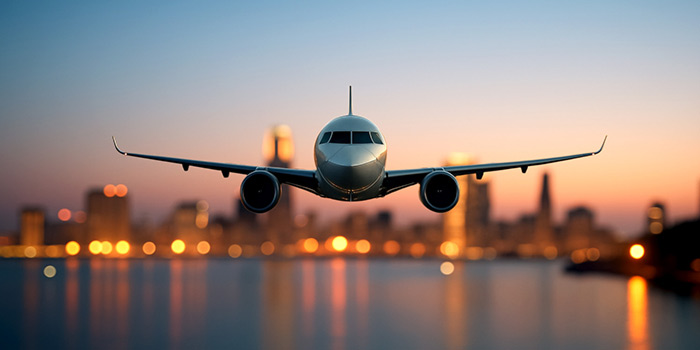Aviation Market Stabilization: A Shift Toward Resilience in 2024
24 Jul 2025
Highlights:
The aviation industry has always been dynamic, shaped by economic cycles, regulatory frameworks, and geopolitical landscapes. In 2024, the market is witnessing a significant shift: fewer new airlines are entering the industry, and fewer existing carriers are ceasing operations. Only 28 new airlines launched this year, while 19 ceased flying—the lowest figures in a decade for both new entrants and exits. This trend indicates a potential stabilization in the aviation sector, driven by evolving economic conditions and heightened operational challenges.

A Changing Market Landscape
Historically, the airline industry has been characterized by periods of rapid expansion, followed by consolidation. The post-pandemic years saw a surge in new entrants as markets sought to rebound from the COVID-19 crisis. However, in 2024, a more cautious approach appears to be taking hold. Economic uncertainty, supply chain constraints, and stricter regulatory requirements are creating significant barriers to entry for new airlines, while existing carriers are demonstrating greater resilience in the face of financial pressures.
Regional Market Trends
While new airline launches have slowed globally, regional dynamics vary considerably. Europe and the Asia-Pacific region continue to lead in new airline entries, largely due to market liberalization efforts and sustained economic growth. However, North America, a mature and highly competitive market, has seen fewer new airline launches. The high costs of entry, coupled with a well-established network of major carriers, have deterred new players from entering the space.
What’s Influencing Market Stabilization?
Several critical factors are contributing to the slowdown in both new airline entries and industry exits:
- Economic Pressures: Global inflation, rising fuel prices, and increased borrowing costs have made it more difficult for new airlines to secure funding. The financial risk associated with launching a new carrier has heightened, leading to a more cautious investment climate.
- Supply Chain Disruptions: The aviation industry continues to grapple with delays in aircraft manufacturing and shortages of critical components. These disruptions have increased costs and made it more challenging for startups to acquire necessary fleet assets in a timely manner.
- Geopolitical Uncertainty: Ongoing conflicts in regions such as the Middle East, Africa, and Eastern Europe have introduced volatility in air travel demand, discouraging potential new market entrants. Uncertain travel patterns and fluctuating passenger demand make it riskier for new airlines to establish themselves.
- Regulatory Hurdles: Stricter safety, financial, and environmental regulations have raised the barriers to entry for new airlines. Compliance with these regulatory requirements demands significant resources, which many aspiring airlines struggle to meet.
Fewer Airline Exits: Signs of Resilience
While fewer new airlines are entering the market, another notable trend is the reduced number of airline failures. In 2024, 19 airlines ceased operations, including seven low-cost carriers, eleven traditional airlines, and one cargo carrier. Only three of these cases involved mergers or transformations, while the remainder exited due to financial struggles or unsustainable competition.
This decline in airline exits suggests that existing carriers are finding ways to adapt to the evolving market landscape. Airlines that survived the turbulence of the pandemic years have strengthened their financial resilience, optimized their cost structures, and leveraged technology to enhance operational efficiency. This newfound stability is a testament to the industry's ability to navigate economic uncertainty.
Looking Ahead: A New Era for Aviation
The reduction in both new airline entries and exits in 2024 signals a temporary stabilization in the aviation market. However, challenges remain, including fluctuating demand, regulatory shifts, and macroeconomic pressures. Moving forward, airlines must continue to embrace strategic agility, leveraging technological advancements and sustainable business models to ensure long-term success.
While the industry has entered a phase of cautious stability, future developments—such as advancements in aircraft technology, shifts in consumer travel behavior, and regulatory changes—will determine the next phase of growth and evolution in global aviation.
Sources
IATA
AviaPro Newsroom
+1 416-544-9969
info@aviaproconsulting.com

Editorial Contacts